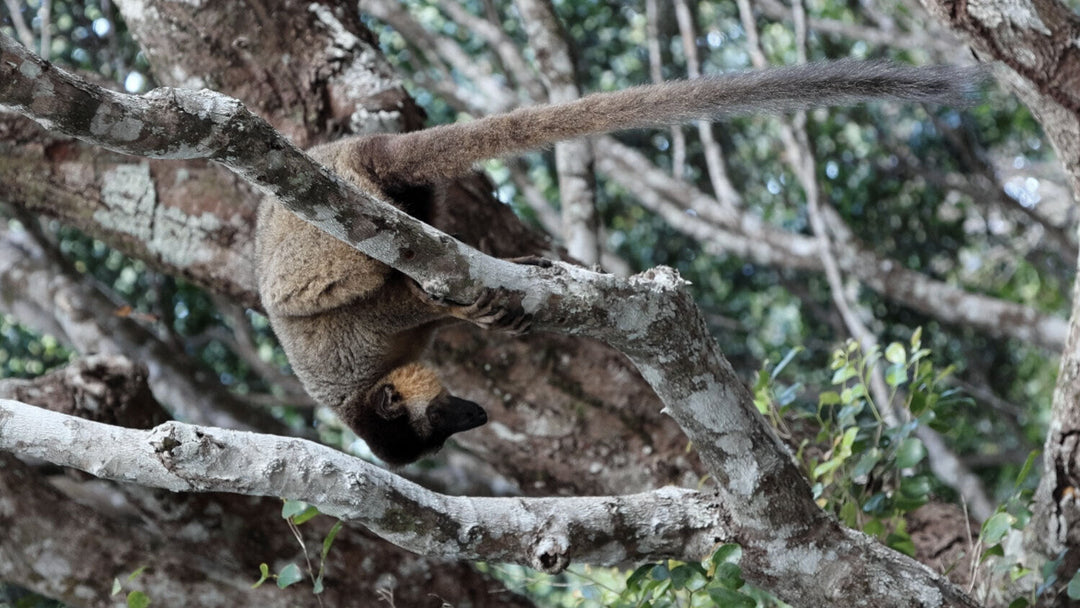Redstarts defend their nest from squirrels
In this blog we share trail camera footage of a pair of common redstarts successfully defending their nest from squirrels inside the entrance hole of a pine marten den box.
Pine marten den boxes are designed and installed with a particular species in mind, but of course we cannot choose who takes up residence…
What are the Redstarts nesting in?
Den boxes are an important part of supporting pine marten recovery, as they create a significant habitat enhancement by providing safe, elevated, insulated dens for pine martens to rest and raise their young. Natural denning opportunities have become scarce for pine martens in many areas, due to habitat loss and the habitat structure found in forested areas which often contain younger trees that lack suitable denning cavities.Occasionally we see other species using these dens too, such as squirrels, bees and wasps. We've previously found a blue tit nest inside a den box, but the video above is our first record of redstarts nesting in a pine marten den box.  The redstarts made their nest inside the entrance hole of a pine marten den box.
The redstarts made their nest inside the entrance hole of a pine marten den box. An inside view of a VWT-style pine marten den box with the lid removed.
An inside view of a VWT-style pine marten den box with the lid removed.
With the lid removed from a VWT-style pine marten den box, the central chamber and two entrance/exit holes are visible. Den box entrance holes are designed to be a suitable size for pine martens to climb in and out of, measuring 90mm wide, 140mm high and 220mm deep in this design of box. A pine marten climbs into an entrance hole, then up and over into the central chamber. The boxes are designed this way to create an insulated denning area, sheltered from the elements. Den boxes are placed on a tree so to avoid prevailing winds driving into the entrance holes, so by coincidence, this also creates a cosy nook that is occasionally used by nesting birds.
Species Overview
The common redstart (Phoenicurus phoenicurus) is a small migratory bird that belongs to the family Muscicapidae. Male common redstarts display vibrant orange-red plumage on their breast, belly, and tail, black wings, and a white forehead. In contrast, the females have brown plumage with a greyish-brown head and reddish-brown wings and tail.Species overviewThe common redstart is known for its distinctive behaviour of quivering its tail while perched, which makes it easier to identify in the field. The common redstart breeds across most of Europe, western Asia, and northern Africa, and spends the winter months in sub-Saharan Africa. Its preferred habitat is open woodlands, parks, and gardens, where it feeds on insects, spiders, and other small invertebrates.Although the common redstart is not currently considered threatened across its wider range, its population has declined in some regions due to habitat loss. In the UK, the common redstart is listed as Amber on the Red List for UK birds. Conservation efforts, such as the protection of breeding habitats and the creation of mixed and deciduous woodlands, are essential for the long-term survival of this bird species.
Article by Ed Snell



